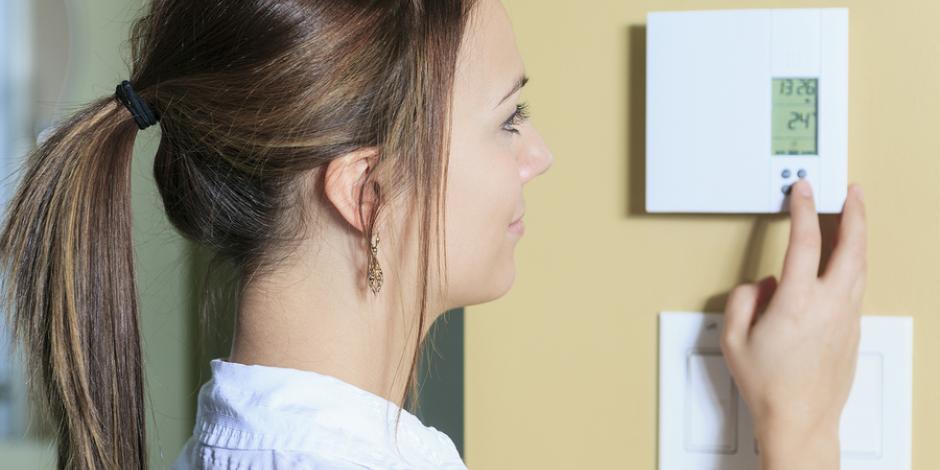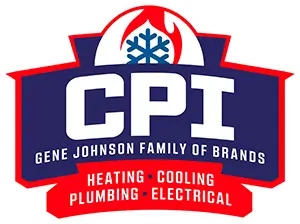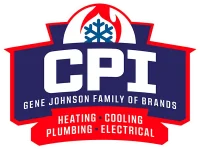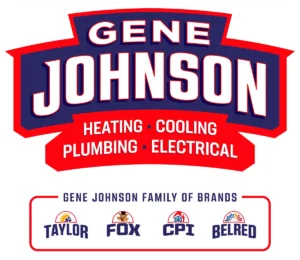Why Is My Air Conditioner Blowing Warm Air?
As the sweltering summer temperatures continue ramping up across the Pacific Northwest, there are few things more deflating than an air conditioning system that simply can’t seem to keep indoor spaces comfortably cool and dry. You crank that thermostat down, expecting refreshing breezes – only to be met with stuffy stagnant warmth forcefully blowing from the vents instead.
The truth is, modern AC systems are pretty phenomenal pieces of equipment when properly maintained. While there’s always the potential for complex compressor or coil issues down the line, many warm air woes stem from relatively straightforward sources you might just be able to tackle yourself. From something as simple as a clogged air filter to refrigerant leaks and thermostat miscalibrations, this guide covers all the most frequent hot air culprits.
We’ll walk through the basic fundamentals of how these cooling systems actually work too. That way, as you start exploring DIY troubleshooting steps, you can better understand the mechanics behind any quick fixes needed to restore your home’s chill sanctuary!

The Basics of How an AC Works
Now that you’re all primed on that irksome warm air predicament, it’s time for a quick refresher on the actual mechanics behind how an air conditioner is supposed to deliver those refreshing cool breezes throughout your Pacific Northwest home. Don’t worry, we’ll stick to just the cooling 101 basics here – enough to clarify why any hiccups throw everything out of whack.
The crux of your AC’s operations centers around a specialized refrigerant fluid that cycles between two core components – the indoor evaporator coil and the outdoor condenser coil. This refrigerant acts as an energy transfer medium, absorbing heat and humidity from inside your home at the evaporator before traveling outdoors to release and shed that captured thermal load through the condenser.
It’s a continuous closed loop enabled by that compressor pump continuously circulating the refrigerant between those two coils. As interior air blows across the cold evaporator coil surfaces, the refrigerant pulls double-duty – removing both heat and moisture content in the process. Those condenser coils and fan outdoors then reject that heat energy outside where it harmlessly dissipates into the ambient air.
With the refrigerant now cooled down again, it circles back inside to absorb more warm air from your living spaces in a hypnotic cycle repeating over and over. As long as each component is functioning properly, you’re left with a steady stream of dehumidified air being chilled to your exact temperature preferences.
The key takeaway? Any breakdowns or restrictions disrupting that carefully balanced refrigerant cycle virtually guarantee warm air woes. Whether it’s a lack of cold refrigerant, airflow obstructions, compressor failures, electrical system faults, or any other mechanical issues – your first sign of trouble will likely manifest as lukewarm breezes blowing from those vents instead of crisp cooling you’re accustomed to.
So with those fundamentals driving our discussion, let’s explore all the different potential culprits that could be responsible for spoiling your home’s chill sanctuary!
Possible Reasons Why Your AC Is Blowing Warm Air
With that air conditioning 101 primer arming you with a basic understanding of how these cooling systems are supposed to function, we can now start sleuthing out the numerous potential sources behind why yours might be blowing warm air instead of refreshing chilled breezes. While some of these causes could indeed require professional HVAC expertise to remedy, plenty of warm air woes stem from relatively simple sources you just might be able to tackle yourself!
Incorrect Thermostat Settings
You’d be surprised how often improper thermostat settings are the root culprit behind homeowners feeling like their air conditioning just isn’t working as it should. Whether it’s an accidental switch over to “heat” mode during the summer months or a wonky schedule override that’s reversed your cooling preferences, always make sure that the thermostat is actively calling for cooled air. Check that it’s set lower than the actual ambient temperature too!
Dirty Air Filter
Out of sight, out of mind – those enclosed HVAC air filters are the unsung air quality heroes of every household. But when they become excessively clogged with captured dust, dirt, and debris over time without replacement, it can severely restrict airflow through your entire AC system. With that reduced air circulation, the evaporator coils struggle to absorb enough heat energy from your home’s interior spaces – resulting in lukewarm output from the vents.
Blocked or Closed Vents
Speaking of airflow issues, another potential obstruction point could stem from internal ductwork disconnects or vents inadvertently being closed or blocked off throughout your household. With cooling equipment unable to intake adequate return airflow from your home’s spaces, the resulting imbalance prevents proper heat absorption at those evaporator coils. Always check all supply and return vent pathways are fully open and unobstructed.
Tripped Circuit Breaker
Does it seem like your air conditioner abruptly stopped blowing any air at all, warm or otherwise? If that’s the case, you’ll want to run out and check your circuit breaker for any indications that it’s tripped off. These protective electrical switches often shut down systems like AC units when excess current starts flowing to prevent damage. Reset any flipped breakers and see if cool air starts flowing again.
Low Refrigerant Levels
Remember that refrigerant we discussed being absolutely critical for facilitating the entire heat transfer process? Well, even the smallest leak or improper charging levels can throw off refrigerant concentrations enough to rob efficiency. When there’s not enough circulating refrigerant volume, your evaporator coils simply can’t extract sufficient heat energy from interior spaces – forcing the compressor to start blowing whatever warm, humid air it can manage.
Dirty or Blocked Condenser Coils
Those condenser coils stationed outdoors in your AC’s condensing unit serve as the thermal exhaust port for the entire heat transfer process. When they become coated in dirt, dust, debris or suffer from overgrown shrubbery obstructing airflow, it inhibits the condenser’s ability to effectively dissipate heat captured inside. With that thermal roadblock in place, your household’s warm air struggles to shed enough energy – forcing tepid output back indoors.
Frozen Evaporator Coils
Ironically, one of the reasons your air conditioner might start blowing warmish air stems from ice buildup! When airflow becomes restricted around the indoor evaporator coil, condensation struggles to drain properly and instead frosts over into solid ice blockages. This not only smothers the coil’s heat absorption capabilities but forces your AC to start re-circulating interior air until that ice finally defrosts.
Faulty Capacitor
Don’t overlook the crucial role those capacitor components play in powering your air conditioner’s major motors like the fans and compressor. If a capacitor burns out, it can prevent those critical components from running at their intended speeds and energy output. With restricted compression and airflow, your evaporator coil loses temperature – leading to lukewarm air distribution until that capacitor gets replaced.
Malfunctioning Thermostat
We already covered how incorrect thermostat settings could prompt warm air woes, but a completely faulty thermostat unit might be the bigger problem child here. Whether its motion sensors have died, the programming is glitchy, or the thermostat itself has no power, it could be signaling your AC to blow warm air – or possibly firing up the furnace at the wrong times too! Recalibrating or replacing the thermostat may be required.
Electrical Issues
Speaking of power problems, any kind of electrical shorts, voltage inconsistencies, or incoming circuit overloads could absolutely sabotage your air conditioner’s performance too. These disruptions might not completely shut down operations, but could force key components like the compressor to run erratically – resulting in subpar compression and warm air distribution. A professional electrical audit might be in order.
Leaky Ductwork
Before that cooled air ever reaches your vents, it has to travel through an intricate ductwork system first. If those ducts have sprung leaks, tears, or disconnections anywhere along their journey, it leads to depressurization – reducing the volume of refreshing air being circulated and allowing warm attic/basement air to infiltrate the system. Sealing ductwork leaks is essential.
Faulty Compressor
Your AC compressor serves a vital role in facilitating the entire heat transfer process. When a compressor starts wearing down or develops internal valve leaks, it loses the ability to generate the compression and pressure differentials to cool refrigerant properly. The end result? Lukewarm air struggling to dehumidify and chill living spaces.
Aging or Undersized AC Unit
Even the highest quality air conditioning systems have a finite service lifetime where components progressively degrade over decades of cooling seasons. Or maybe your home’s unit was improperly sized and too small for the square footage during installation. In either case, an AC system simply too old or undersized can’t produce sufficient cooling power to overcome interior heat loads – delivering warm stale air as it sputters along.
Refrigerant Leak
That refrigerant fluid remains the star player enabling your entire air conditioning system’s heat transfer process. But any leaks springing in the coils, compressor tubing, or condenser allow that chemically-treated refrigerant to rapidly escape – robbing your HVAC equipment of the thermal transfer agent it relies upon so heavily. Without enough refrigerant circulating, you lose cooling power fast.
Faulty Expansion Valve
This often overlooked component situated just before the evaporator coil plays a pivotal role in regulating how much liquid refrigerant gets metered into the coil at any given time. If that expansion valve becomes stuck, gunked up, or just fails outright, it can’t maintain the balanced refrigerant flow rates necessary for consistent evaporator cooling. Uneven temperatures result in lukewarm air.
With such an extensive list of potential warm air culprits, it’s no wonder so many homeowners struggle to pinpoint the precise source of their air conditioning woes. While basic diagnoses like checking air filters, thermostat settings, and condenser airflow prove great initial starting points, any ongoing cooling deficiencies signal the need for professional HVAC equipment inspection and repair. The last thing you want is compounding damage from band-aid fixes!
DIY Quick Fixes
For some of those more straightforward warm air woes stemming from basic airflow restrictions, thermostat snafus, or minor assembly oversights, there are indeed a handful of quick DIY fixes you can try tackling before calling in professional reinforcements. With a little basic HVAC know-how and the right tools, these simpler solutions just might restore your cool air output!
Replace Air Filters
Let’s start with one of the easiest preventative maintenance steps – swapping out those clogged air filters! Clearing away built-up dust, hair, and debris goes a long way toward restoring proper airflow volumes to your air conditioner. Most systems use basic pleated filters requiring quarterly replacements at minimum.
Clear Condenser Unit
While you’re already knee-deep in filter duty, take a few extra minutes to tidy up that outdoor condenser unit too. Using a stiff brush and/or compressed air, carefully clear any grass clippings, leaves, dirt, or other residue blocking those coil fins and fan paths. Maintaining clear two-foot clearances all around is ideal.
Check Thermostat Inputs
As covered earlier, something as simple as accidentally engaging “heat” mode on your home’s thermostat can spell warm air blowing inside – even on the hottest summer days! Visually inspect that the target temperature input looks lower than the current indoor reading. If needed, reset scheduling and reprogram desired cooling preferences.
Unclog Condensate Drains
Another DIY remedy to consider involves flushing out those condensate drain lines connected to your indoor evaporator coil housing. These PVC pipes can become severely clogged with mineral deposits and sludge over time, causing drainage backups that eventually leak onto your evaporator – degrading heat absorption. A wet/dry vacuum or compressed air canister can potentially dislodge minor stoppages.
Reopen Air Pathways
While inspecting your system, take a walk around the home and double-check that all supply and return air vents remain fully opened and unobstructed. Closed-off vents drastically reduce airflow circulation, depriving your air conditioner of the interior air volumes needed for proper heat transfer. Simply reopening them could offer a quick fix.
For any warm air issues persisting beyond those basic unclogging, replenishment, and settings adjustments, it’s best to enlist professional assistance rather than attempting more intricate self-repairs. Improper disassembly or forcing faulty parts risks inflicting collateral damage on your AC system – opening up an entirely new operational can of worms. Sometimes the quickest fix involves knowing when to call in the certified experts.
When to Call the Professionals
Even for the most DIY-savvy and mechanically-inclined homeowners out there, some warm air conditioning woes simply exceed the scope of what basic troubleshooting and repairs can reasonably address. From complex electrical malfunctions to major mechanical breakdowns, these are instances where the hassle-free solution involves waving the white flag and calling in professional HVAC technicians.
When you’ve already exhausted all those standard quick fixes like replacing air filters, clearing debris obstructions, and double-checking thermostat settings yet your AC still can’t seem to deliver crisp, refreshing air throughout the home, it’s time to call in the repair cavalry. Certified experts come equipped with all the specialized tools, testing equipment, and mastery needed to quickly diagnose underlying problems lurking within your system.
Electrical System Evaluations
One surefire area where technical expertise proves invaluable involves any irregularities stemming from your home’s electrical systems and wiring feeding your air conditioning setup. Professionals carry meters capable of pinpointing issues like voltage irregularities, failing capacitors, circuit overloads, and control board faults. Rather than risk further damage through amateur electrical work, it’s better to let certified techs rectify these types of potentially hazardous problems.
Refrigerant Leak Diagnostics
Remember, your AC relies entirely upon an optimal refrigerant charge level and balanced flow to facilitate the entire heat transfer process powering cool air distribution. Should any component leaks start springing and draining away those chemically-treated refrigerants, that’s a job requiring specialized reclamation equipment and EPA certifications most homeowners simply don’t have access to. Technicians can run comprehensive refrigerant leak tests to track down any refrigerant losses.
Component Inspections & Repairs
From compressors and condensers to evaporators and expansion valves, today’s modern air conditioning systems contain all sorts of electro-mechanical components operating in precise harmony. When telltale sounds like grinding noises or locking up start occurring, those individual pieces often require hands-on expert inspection, diagnostic testing, and potential rebuilds or replacements by licensed professionals.
System Replacement Evaluations
For older HVAC setups displaying chronic cool air deficiencies despite multiple repair attempts, sometimes the wisest solution does indeed involve investigating a full system replacement. Trained technicians can provide load calculation assessments factoring insulation levels, sun exposures, and square footage to make sure you’re matched with a new installation powerful enough to meet your home’s cooling demands.
Investing just a little into professional diagnostic fees provides peace of mind knowing you’re not wasting valuable time and money on fruitless amateur repair efforts doomed to fail. With experienced HVAC technicians handling your warm air conditioning woes, you’re back breathing easy in a perfectly chilled home before you know it!
How to Maximize AC Efficiency
Once you’ve gotten to the root of those warm air woes and restored cool, comfortable breezes throughout your Pacific Northwest home once again, it’s the perfect time to implement some good habitual practices that’ll keep your air conditioning system operating at peak efficiency for years to come too. Don’t let all that refreshing chill get squandered away through energy waste!
Start by setting a recurring monthly reminder to routinely inspect and clean off any dust and debris accumulating around your outdoor condenser unit’s coils and fan intake area. Allowing a buildup of grass clippings, leaves, or nesting critters to restrict that critical airflow circulation will hamper your system’s ability to expel interior heat loads effectively.
While you’re in a cleaning groove, go ahead and thoroughly vacuum away any interior dust buildup around your air returns, vents, and that indoor evaporator coil compartment too. Those seemingly harmless dust bunnies create unnecessary airflow resistance that robs cooling power over time as they accumulate. Replacing your HVAC air filters every 3 months proves a wise preventative step as well!
Don’t forget to periodically clear any obstructions from your condensate drain lines and piping too. Flushing out sludge and mineral buildup prevents those critical dehumidification channels from backing up and overflowing onto your evaporator coils. An easy vacuum clear helps maximize moisture removal efficiency.
For optimal climate control performance year-round, have your HVAC technician calibrate a precisely tailored temperature setback schedule that automatically dials back cool air output during stretches you’re away from home or sleeping. Those incremental savings deliver exponential returns over time!
How to Prolong AC Lifespan
No matter how premium or advanced the air conditioning system is, every component, unfortunately, faces a finite service lifetime when those cooling capabilities gradually degrade. But with some proactive planning and preventative maintenance habits, you can easily maximize longevity too!
Start by understanding what’s typical for today’s high-efficiency air conditioners. Most quality cooling systems installed today can reasonably last up to 15-20 years with proper care before inevitably getting flagged for replacement. Scheduling an annual professional tune-up ensures your HVAC partner stays on top of any small issues before they snowball into larger problems too.
Given how pricey new AC installations can prove, invest a little now into maximizing performance through services like evaporator coil decontamination, drain line flushes, condenser coil degreasing, filter replacements, and electrical system inspections on a yearly basis. Your trusted technician can nip any emerging faults or performance drops in the bud!
Speaking of those air filters, make sure you aren’t skimping on routine filter replacements throughout the cooling season either. Those inexpensive filters preserve HVAC efficiency while preventing debris infiltration that accelerates internal component wear over time. Change them every quarter without fail.
If you notice issues starting to inevitably crop up towards that 15-year service lifetime point, your technician can also advise retrofitting certain components for a budget-friendly equipment refresh. Often something like swapping out the compressor or coils proves more economical than incurring the full costs of a completely new system too soon.
With those handy longevity-enhancing habits in your back pocket, you can feel confident delaying that pricey AC system replacement purchase a little longer while simultaneously optimizing home comfort in the interim. Don’t let complacency turn your cooling investment into a premature money pit!
Restore Cooling Comfort with CPI’s Professional AC Services
There’s no reason for Pacific Northwest homeowners to suffer through sweltering summer heatwaves when qualified cooling system experts from CPI Plumbing & Heating are just a call away. For decades, CPI’s certified HVAC technicians have provided comprehensive air conditioning services to diagnose and resolve any warm air issues compromising your home’s comfort.
Whether your system simply needs a basic air filter change and debris clearing or more advanced repairs like refrigerant leak sealing and compressor overhauls, CPI has the knowledge and specialized tools to pinpoint the problem’s source quickly. Our technicians perform thorough evaluations to determine the most cost-effective solution – aiming to extend your AC’s lifespan through repair when possible.
When recurring warm air problems signal your system has finally reached the end of its service life, you can depend on CPI’s professional expertise to size and install a new, high-efficiency replacement perfectly suited for your home’s cooling needs. With a firm commitment to workmanship quality, all installations are completed to manufacturer specifications.
Don’t resign your family to another summer of discomfort. Call the trusted cooling professionals at CPI today at (360) 822-9306 to schedule an appointment and restore perfect air conditioning performance.


